- Botanizing with NASMP students (6/26/2025)
In early June we had the pleasure of hosting three students in the Native American Summer Mentorship Program for a couple days. Harley, Cathaline, and Baahozhooni are students at USU-Blanding and spent four weeks this summer in Logan getting hands-on lab and research experience. It was wonderful to get to know them, hear about their interests and perspectives, and introduce them to our research! The first day we focused on fieldwork with a plant collecting trip up Temple Fork in Logan Canyon; the second day was lab work involving PCR amplification and gel electrophoresis on DNA from Cystopteris samples as part of Chinedum’s research. Then the students were off to the Rushworth Lab for the rest of the week, to see a more experiment-driven type of botanical research, while the Rothfels Lab headed off on the Intermountain Botanical Foray. Sadly we have no pictures from the lab day, but here’s some of what we got up to the first day!
We started the day by checking out the old beaver dams on Temple Fork. Though we didn’t see any beavers that day, there was lots of evidence of their ecological effect – angled cuts on willows and slow, meandering streams.
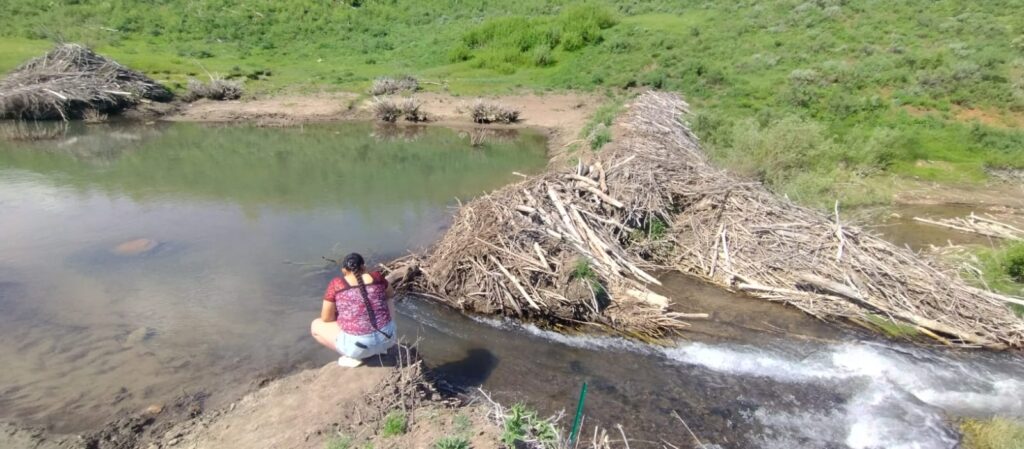
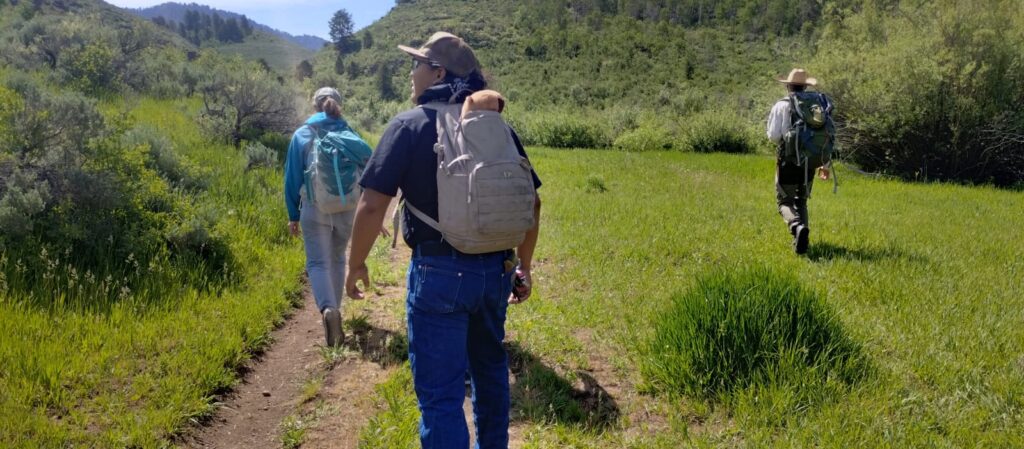
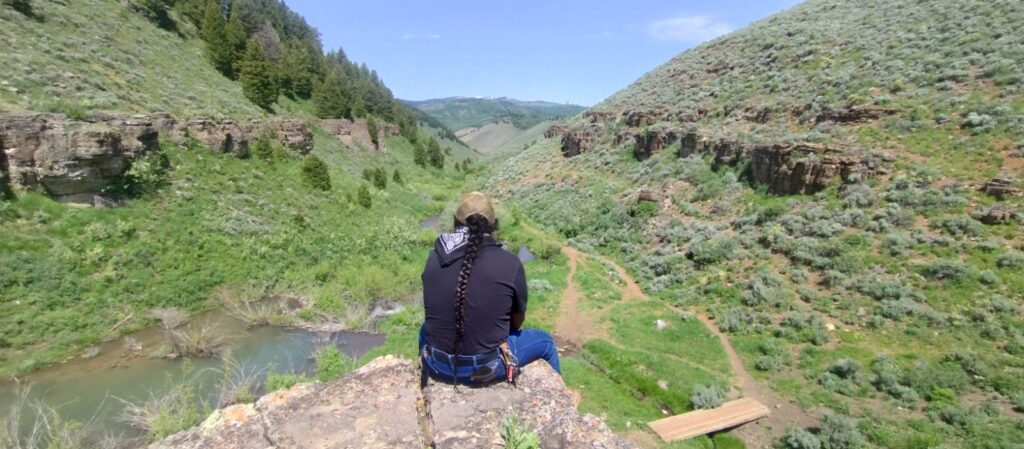
We documented the biodiversity with some iNaturalist posts and a few specimen collections.
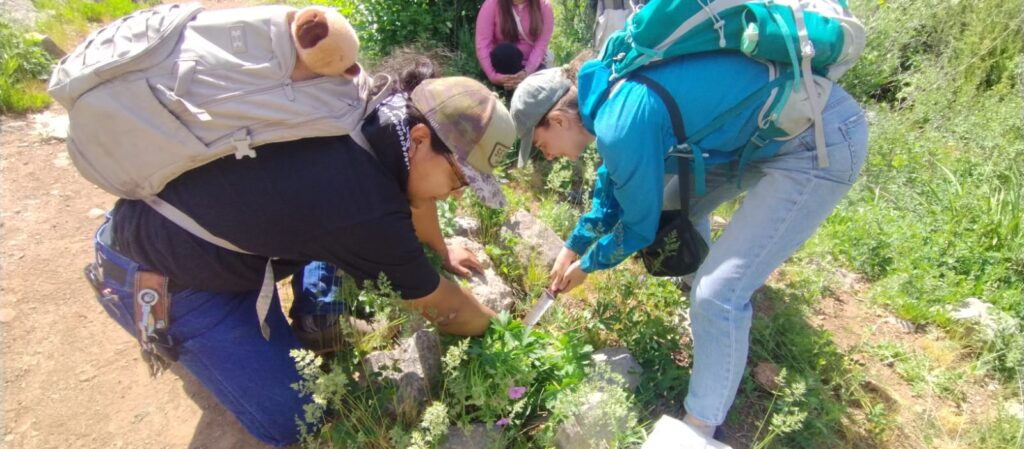
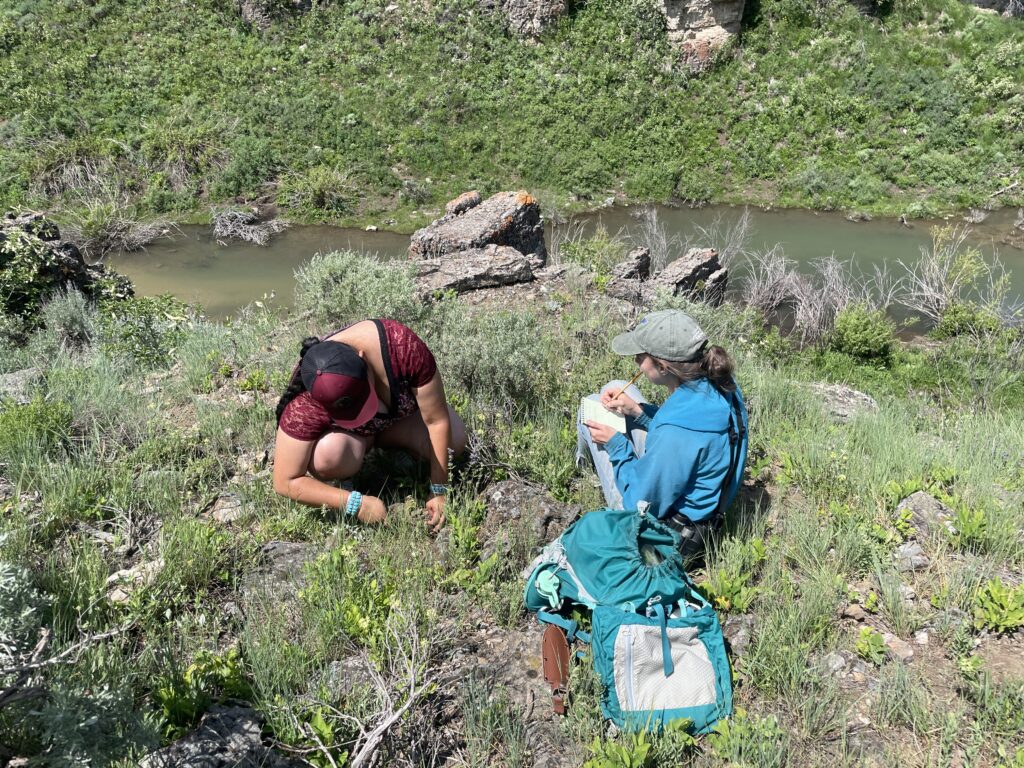
Then we headed to the Intermountain Herbarium to press our samples. We all learned first-hand why the genus Balsamorhiza (balsamroot) has its name – the taproot has a strong but pleasant piney smell! Balsamorhiza macrophylla (cutleaf balsamroot) pictured here.
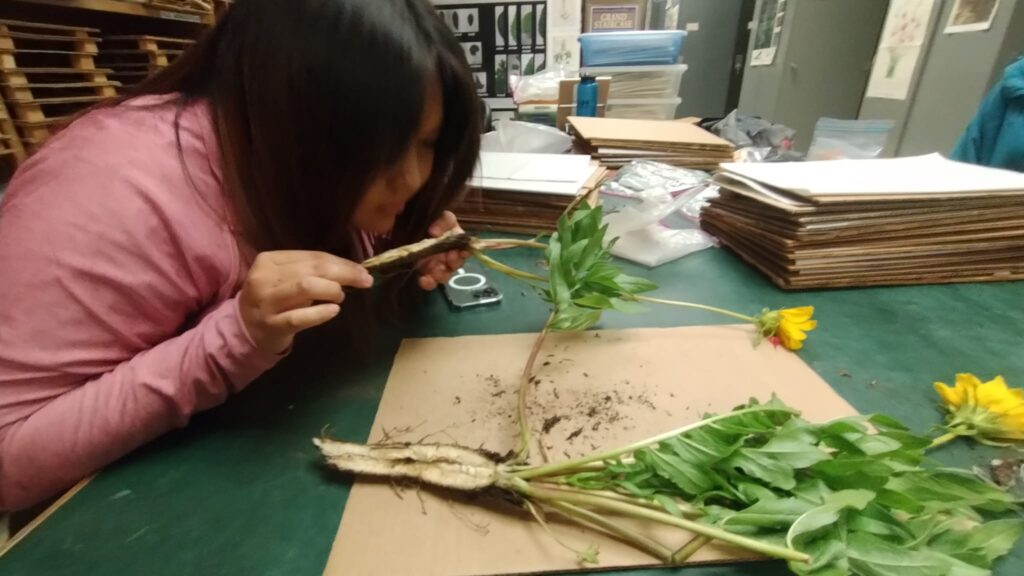
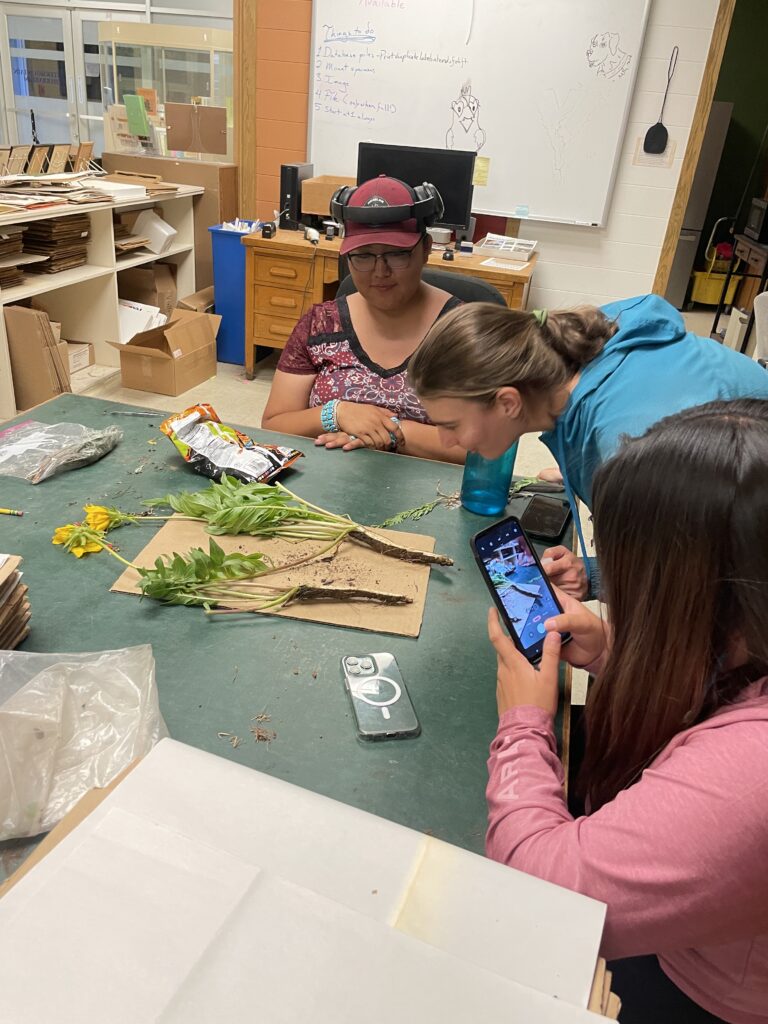
- Chinedum gets top honor (5/8/2025)
Chinedum wins the JS Karling Award!
A slightly belated congratulations to Chinedum who has achieved a remarkable double honor—winning the 2024 J. S. Karling Graduate Student Research Award (the top graduate research award from the Botanical Society of America) and an ASPT Graduate Student Research Award!
We are thrilled to celebrate this major accomplishment and can’t wait to see where his work takes him next. Way to go, Chinedum!
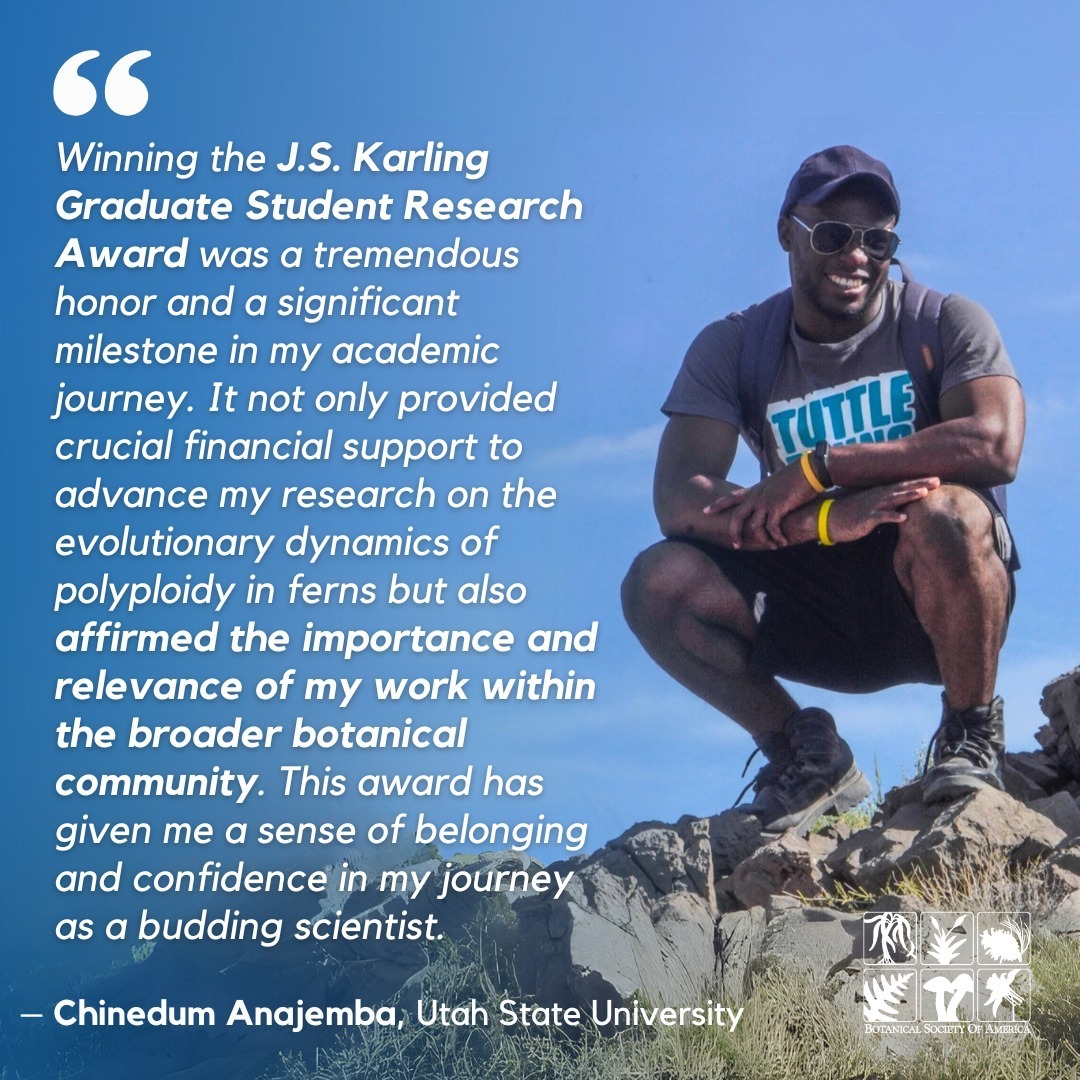
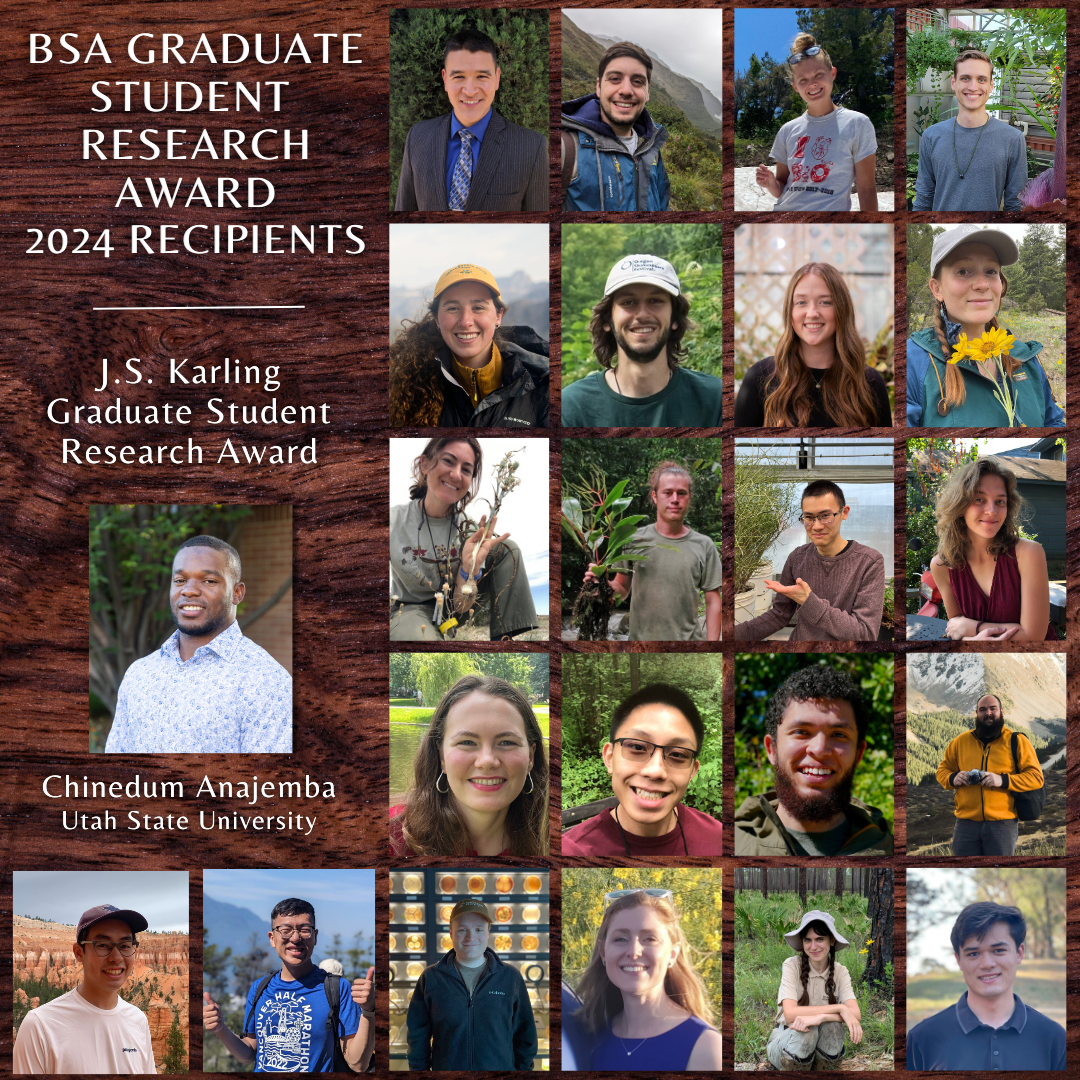
- Candidate Chinedum! (4/27/2025)
Chinedum Cruises to Candidacy
Congratulations to Chinedum, who crushed his comprehensive exams (both the written and oral portions) and now is officially PhD Candidate Anajemba! He handled all questions with skill and aplomb (drawing a map of North American might have been the biggest challenge–which side does florida go again?). Well done, we’re all very proud of you!
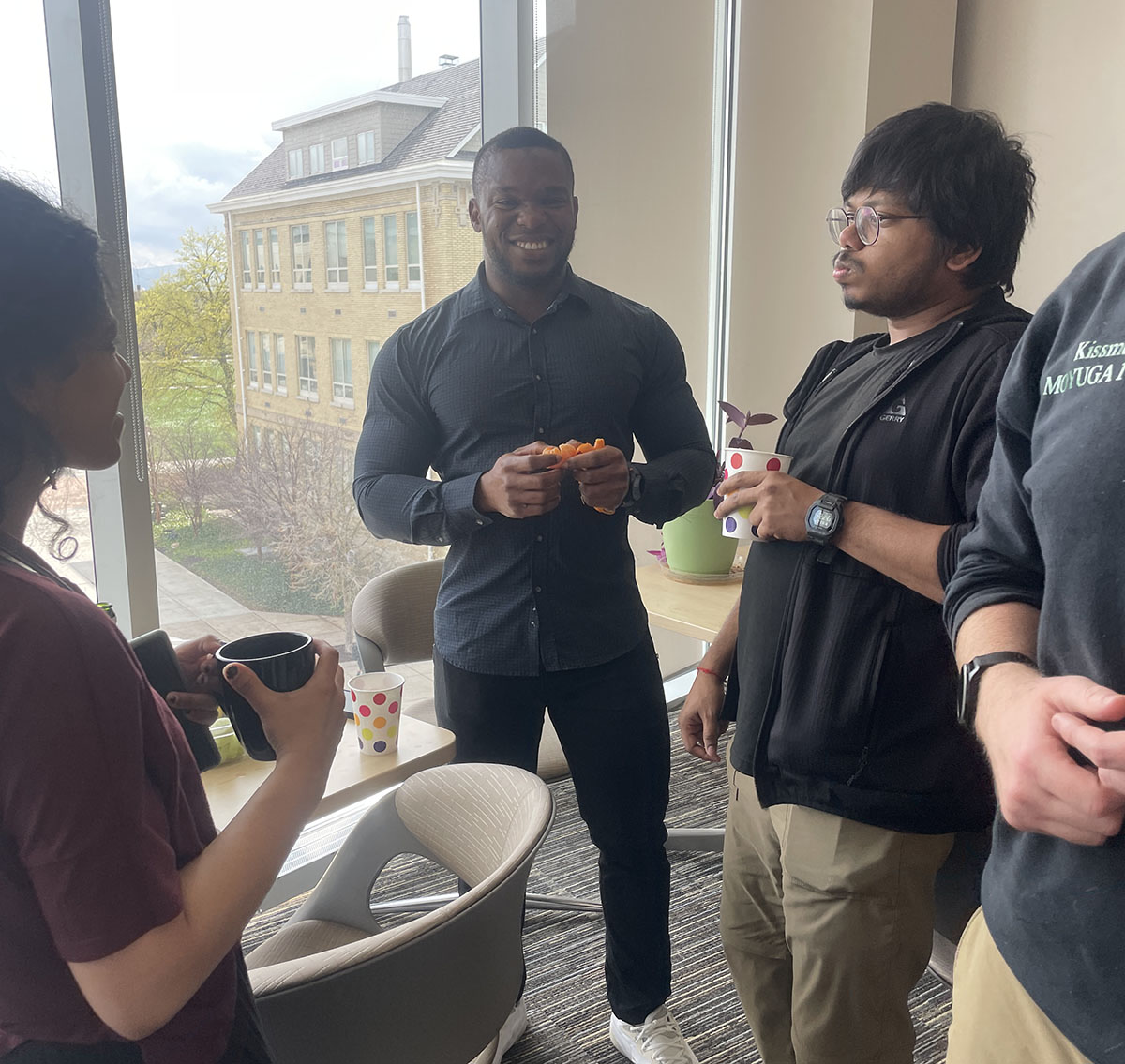
Our Award Cheese Photographer (Carl) clearly wasn’t up for the task, but not even the horrendous backlighting can hide the smile on Chinedum’s face. - Dr. Sedaghatpour!!!! (1/6/2025)
WHOOOOOOOOOOOO!!!!
Congratulations to newly minted Dr. Maryam! There were some dark moments (as there always are) and then … you did it! It’s done! CONGRATULATIONS!!! We all (Rothfels lab sensu lato) knew you would, and I’m very proud of you!
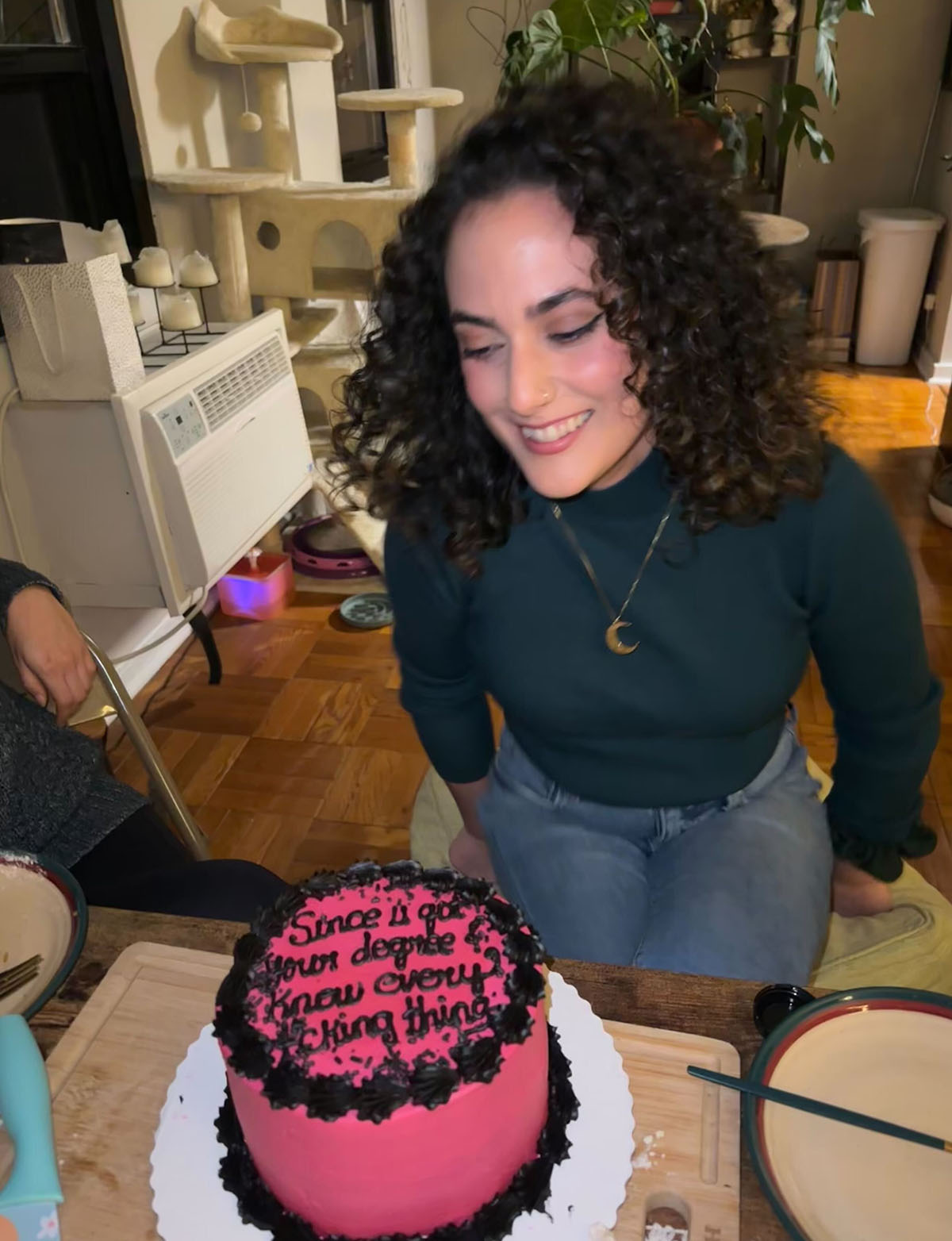
Too bad we couldn’t celebrate in person! You are owed: One awkward cheese. *The Rothfels Lab is not responsible for any baked goods profanity. - We miss you David!! (11/14/2024)
Rothfels Lab stalwart and apomixis/xeric fern enthusiast, David Adelhelm, has left us for sunnier and more lucrative pastures—we miss you David! Unfortunately, photos of our good-bye bash were lost in an inexplicable accident, so we will have to settle with these few images as homage to David’s many contributions to the lab.

Every Crown of Glory has its story (stories)–we miss David for each one. 
This photo sums up a lot of David. 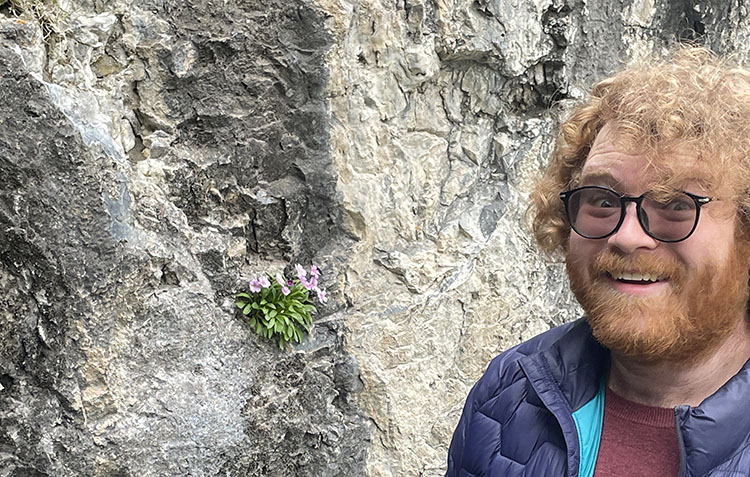
Ok, it’s not a xeric-adapted cliff-dwelling *fern*, but it’s still pretty cool. 
David and Myriopteris in their natural habitat. 
Happy trails!!! - Foray 2024: Ephraim Canyon and the Wasatch Plateau (9/11/2024)
For this year’s Intermountain Botanical Foray we headed to Ephraim Canyon and the Wasatch Plateau in July to explore a range of ecosystems up to 11,000 ft – it was a blast!
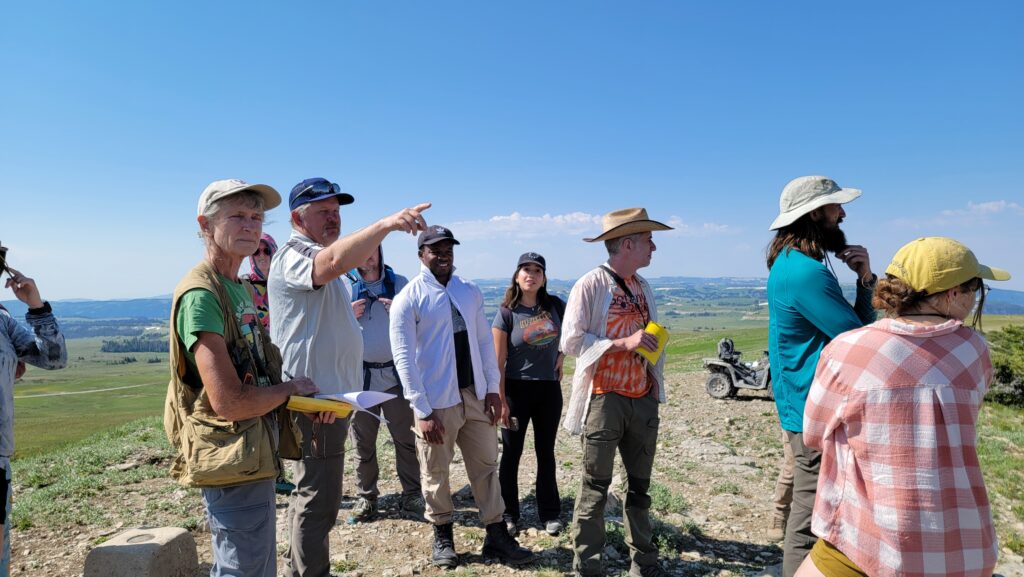
We stayed at the Great Basin Station, where some of the first watershed research in the world was conducted. Highlights include diverse wildflower meadows, snowmelt communities, and calcareous mountaintop specialists. Thank you to everyone who participated, and especially to Allan and Richard Stevens for their knowledge of the local ecosystems and Station history. We are also grateful for the support of the Utah Native Plant Society and the National Science Foundation.
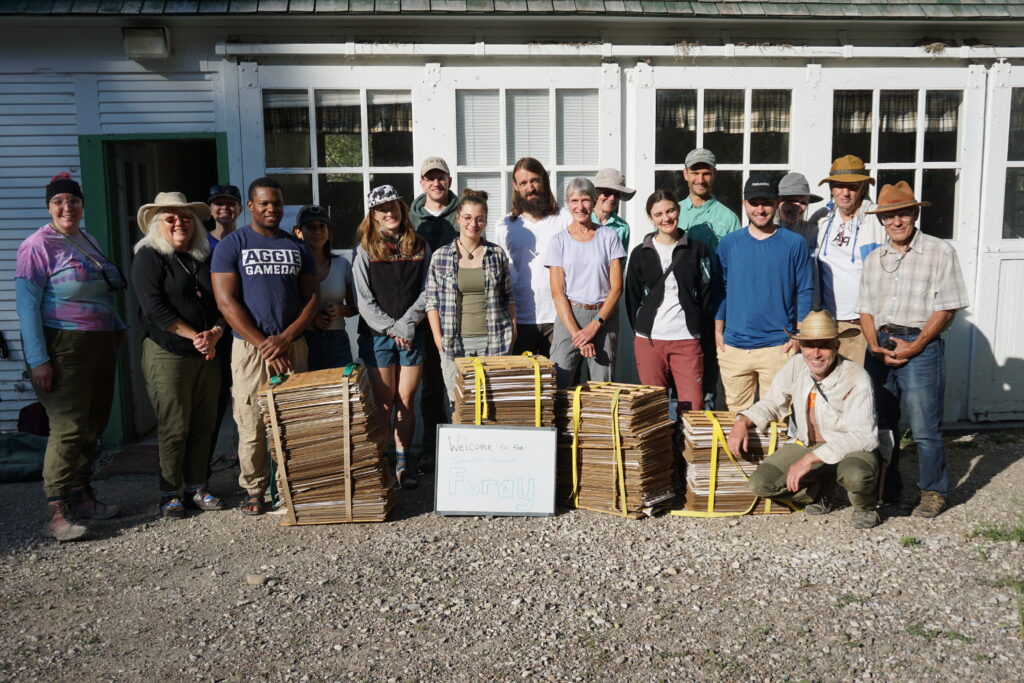
Here are some botanical highlights:

[Townsendia montana, an adorable acaulescent species.]

[Triglochin palustris – almost overlooked, but luckily an Erythranthe drew our attention to the stream bank!]

[Silene petersonii]

[A surprise Botrychium, perhaps Botrychium tunux!]
Three days wasn’t anywhere near enough time to see everything, but we tried! Check out our iNaturalist project here.
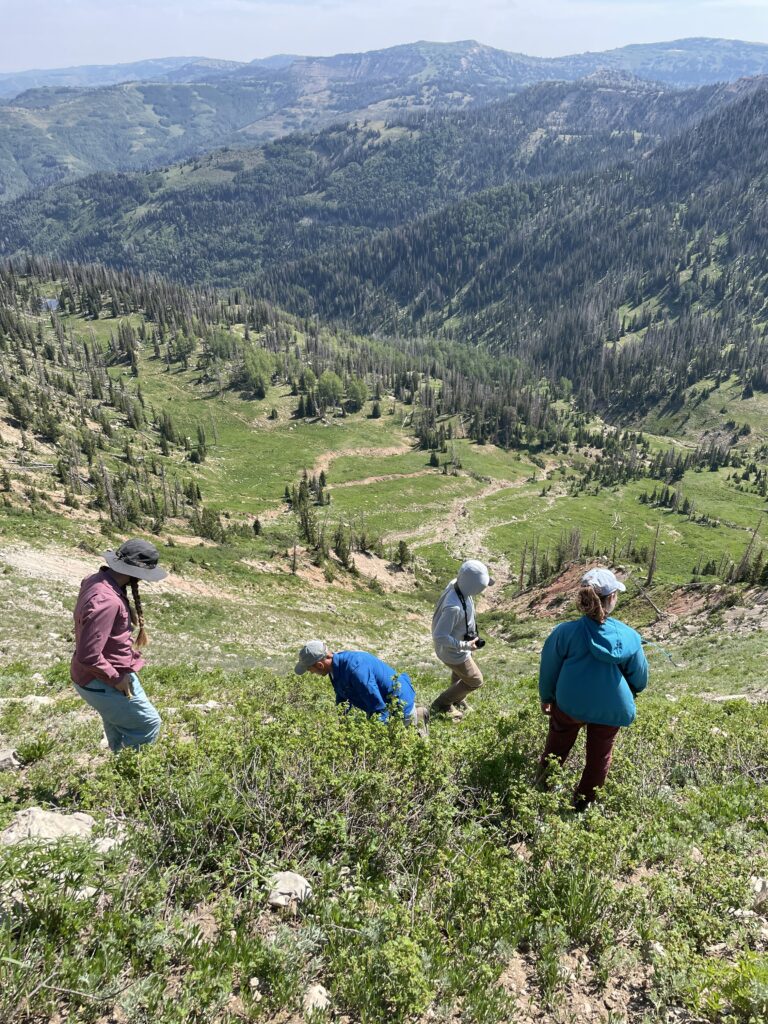
- We’re on N(U)PR! (8/2/2024)
Foray on the Radio
Ryan Helcoski and his partner EV joined the Intermountain Botanical Foray this year and produced a cool piece on our adventures for Utah Public Radio! I hate hearing my recorded voice and yet I actually enjoyed listening to this–a real testament to Ryan’s interview and production skill (and to how intrinsically fun the Foray is?).
https://www.upr.org/science/2024-07-23/utah-botanists-and-plant-hobbyists-gather-in-ephraim-to-build-community
- Ferns and Bomarea galore in Peru (5/2/2024)
Ptremendous Ptropical Pteridology
In late March Carl and Julia joined Carrie for some botanical collecting in the Andes of Peru – what an adventure!
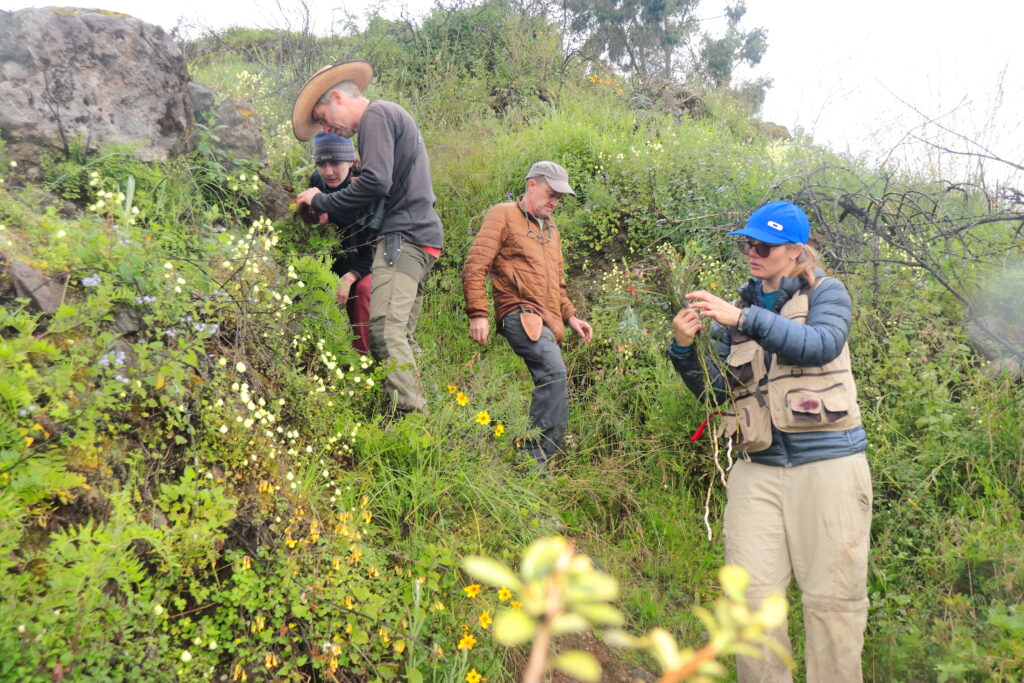
Carrie organized the trip and was taking some time for fieldwork before the fall, when she will be very busy in her new position at at the University of Washington/Burke Museum! Carrie works primarily with the monocot genus Bomarea (Alstroemeriaceae) which has a lot of diversity across Central and South America. Even we fern-folk have to admit Bomarea is quite beautiful! So the trip had a dual focus of Bomarea and ferns (especially Cystopteris and cheilanthoid ferns).
After flying in to Lima, meeting up with Carrie and Fernando Alzate (also a Bomarea fan; Universidad de Antioquia, Colombia), we headed a few hours east into the mountains for the first part of the trip. As we drove away from the foggy coast, we were struck by the dry climate. But as we climbed into the mountains, the scenery got greener and greener. We met up with a fantastic Peruvian botanist, Paúl González, in the mountain town of Canta (2800m elevation). We spent a few days exploring the mountains in that area – there were Bomarea, ferns, and hummingbirds galore!
Almost immediately after getting to Canta, we saw the first three ferns of the trip on a rock wall – Pleopeltis, Equisetum bogatense, and Cystopteris fragilis!
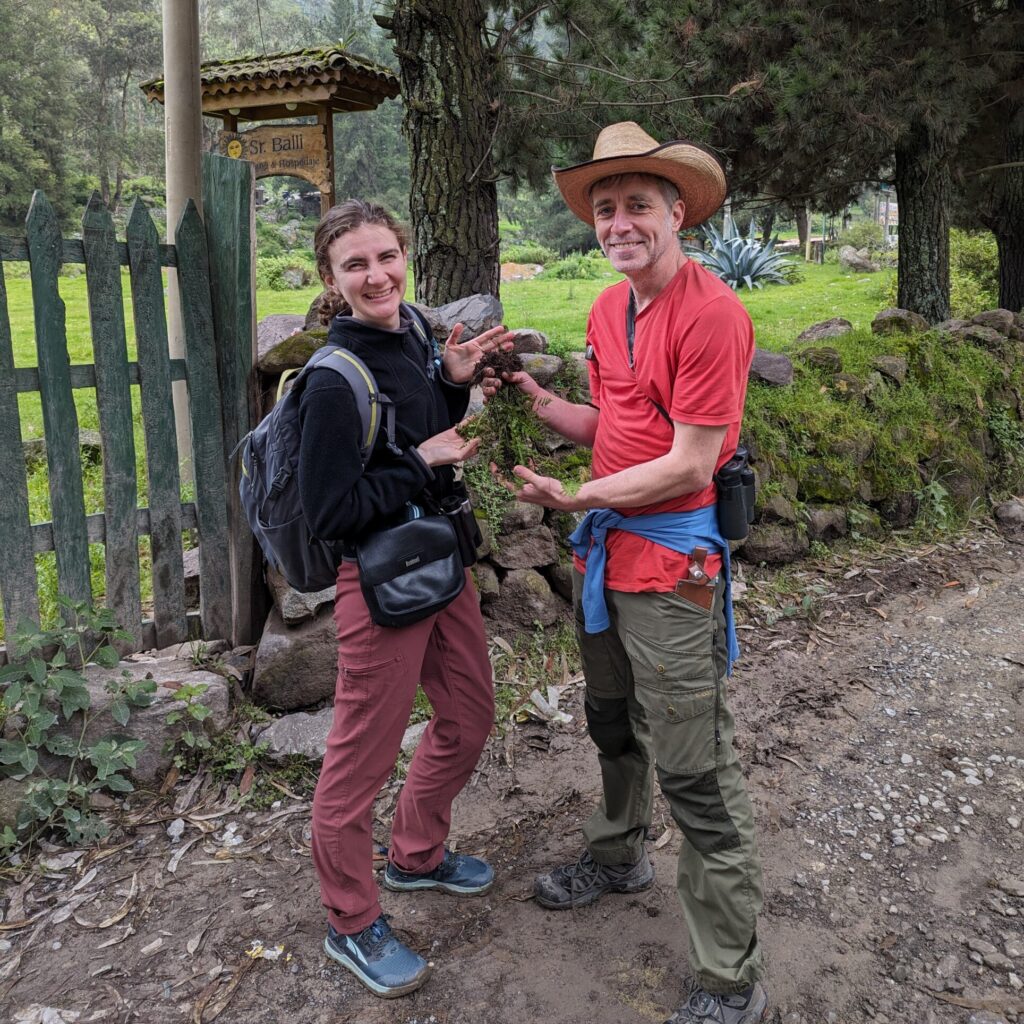
Julia, Cystopteris fragilis, and Carl A literal and figurative high point on our Canta explorations was at 4200m – some of us were feeling a little woozy! But it was absolutely worth it, as we made it up to a rock field filled with the stunning Bomarea longistylus.
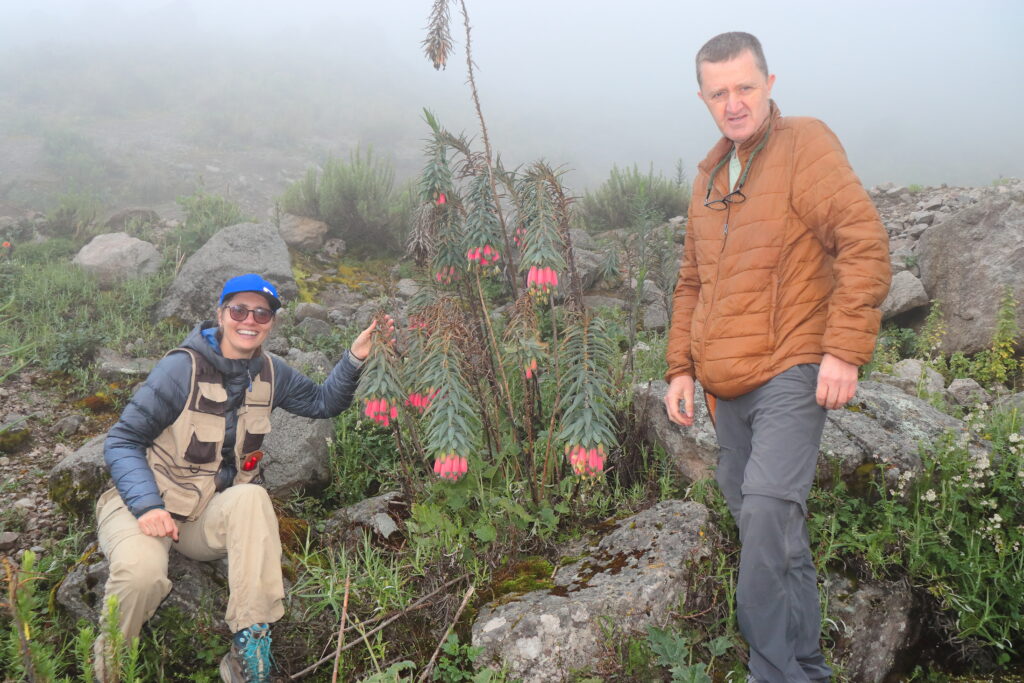
Carrie, Bomarea longistyla, and Fernando Paúl is an amazing photographer and took these stunning botanical shots. He’d rig up a piece of black velvet as the background, and hang/hold the plants a foot or so in front so the fabric wouldn’t be in focus.

Pellea ternifolia 
Alonsoa meridionalis 
Bomarea parvifolia – look at that underground storage organ! 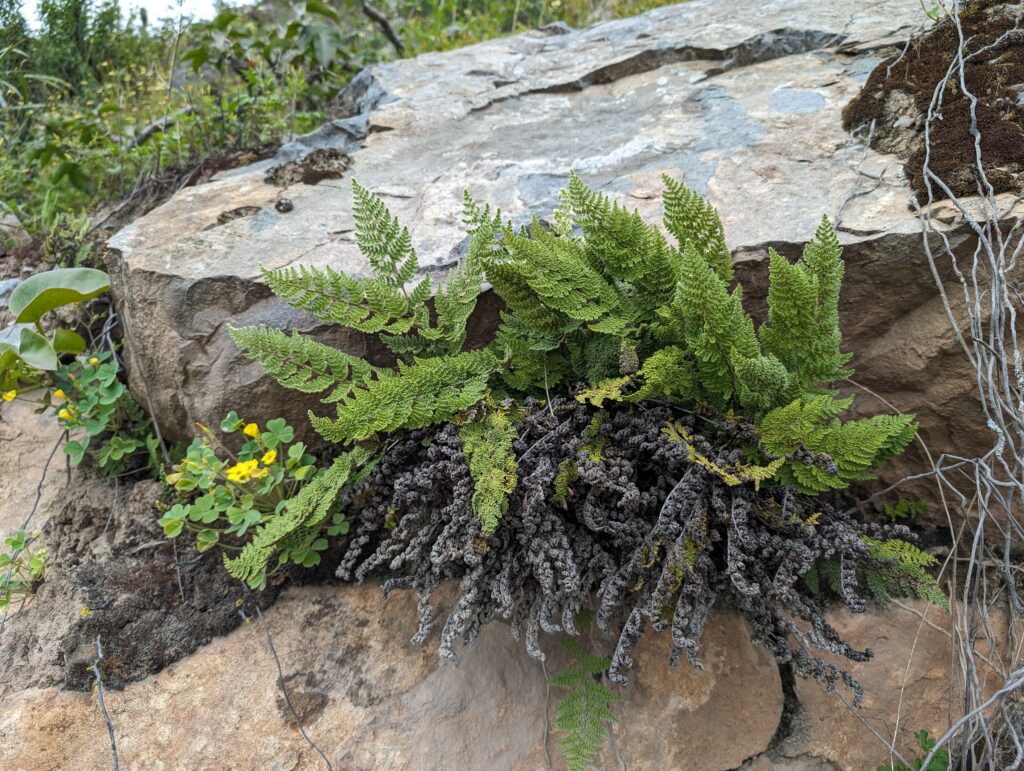
Myriopteris myriophylla in its element. 


The Canta team: Fernando, Carl, Julia, Paúl, Carrie After an amazing few days, it was time to say goodbye to Paúl and Fernando. We headed off to Cusco, where we met up with Lucero Alfaro, a wonderful local botanist who was indispensable as we traveled between different towns to see different ecosystems.
Our first afternoon we visited an archeological site called the Temple of the Moon just outside of Cusco – what an amazing combination of history and botany! The incredibly skilled Incan stonemasons hewed giant blocks out of rock outcroppings, and those same outcroppings are rich with all sorts of plants, including (luckily for us) many ferns (including Cystopteris) and Bomarea!

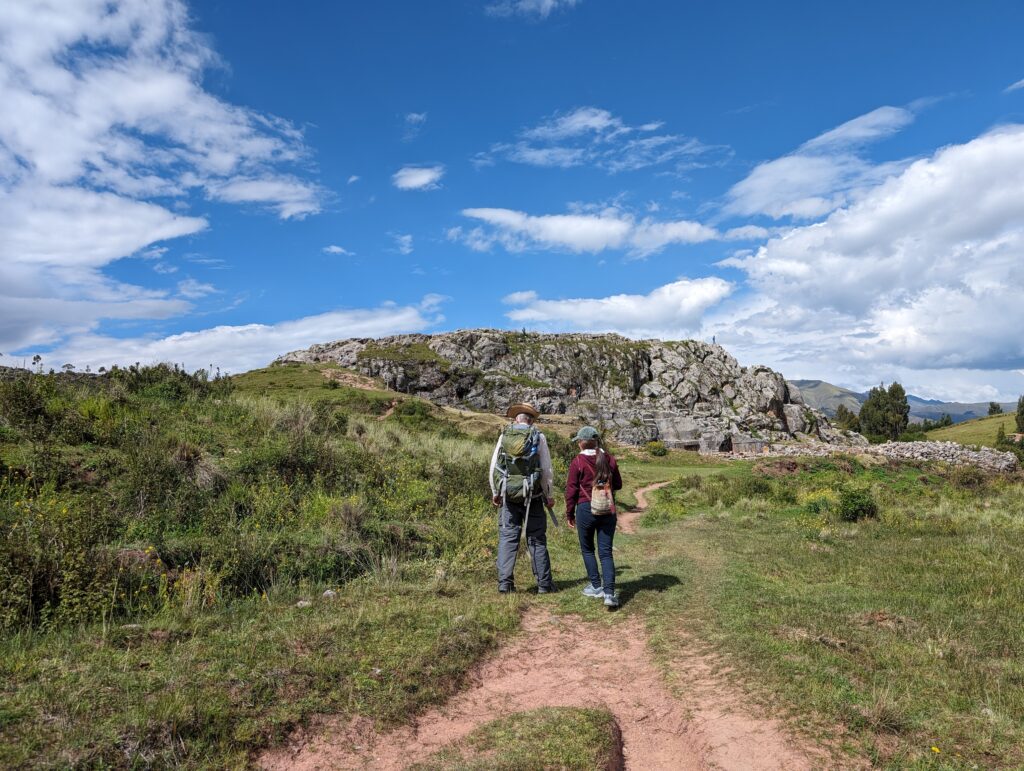
The Temple of the Moon (Cusco) is to the right of the rock outcrop. Carl and Lucero surveying for interesting plants. 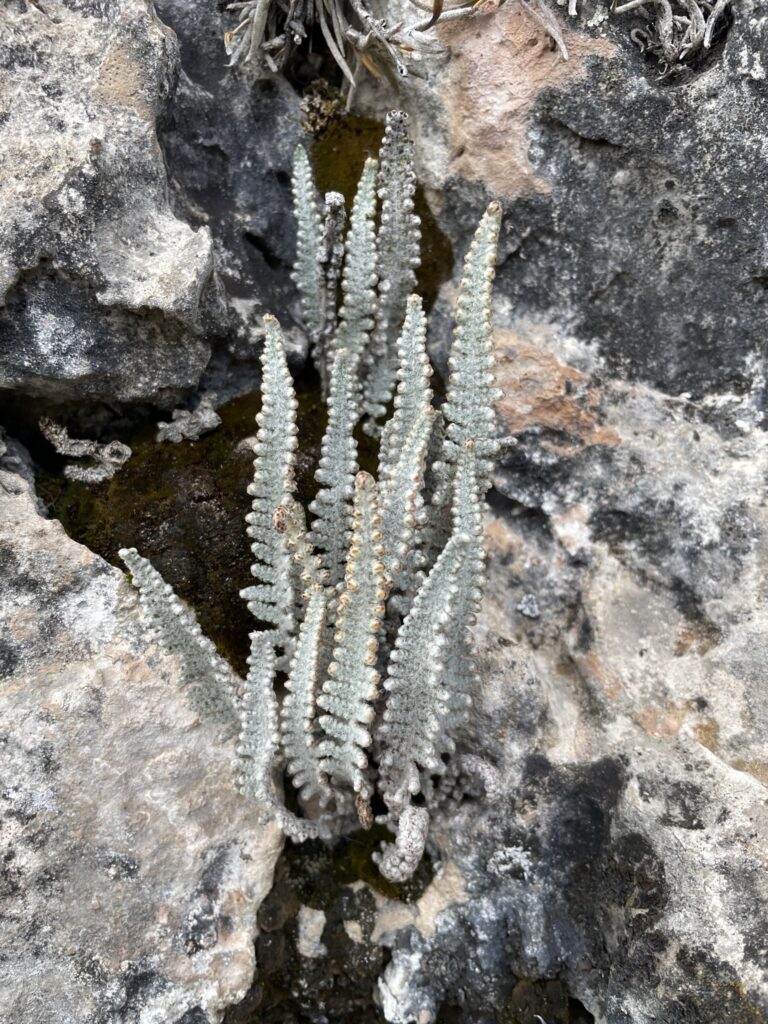
Cheilanthes scariosa 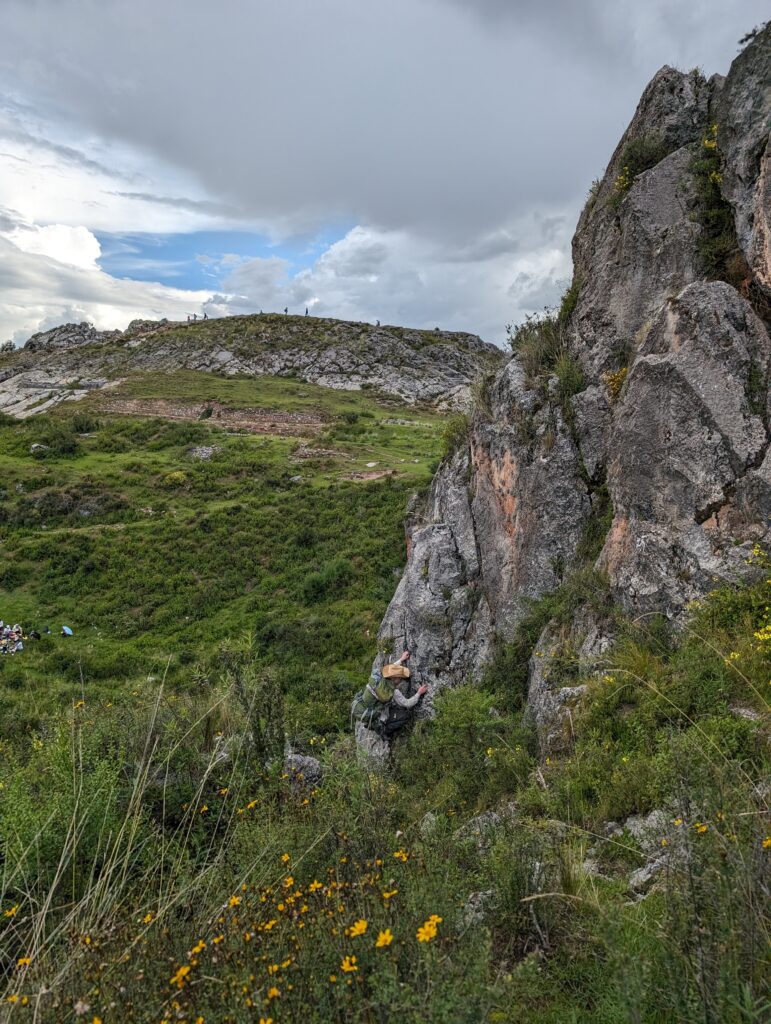
Carl investigating Cheilanthes scariosa to be continued…
Check out our iNaturalist project for all the neat things we observed!

- Mission Myriopteris … accomplished! (4/26/2024)
David (and to a lesser extent, me [carl]) has been on a mission. A mission to see the lone Myriopteris species of Cache County, the elusive M. gracilis. Nevermind that somehow it’s been iNat-observed in the county just shy of 40 times, making it one of the most-observed species that he (and I) have yet to see AND it’s a cheilanthoid at that…
So we took PIP (“plant identification practice”, a weekly Intermountain Herbarium open house) to the field this week to see if we could put an end to this foolishness.
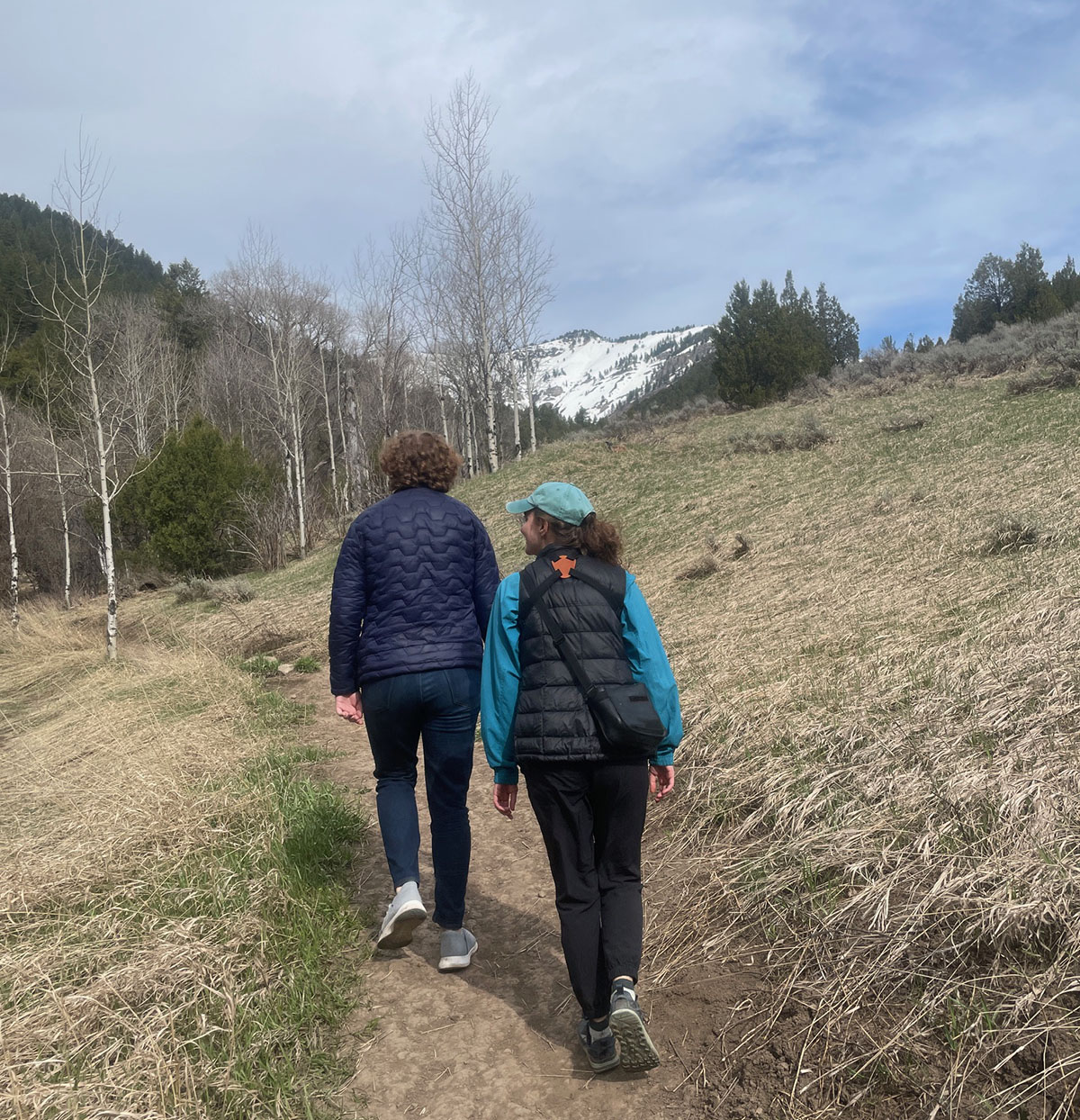
Before we realized that, obvi, we should be looking for Myriopteris, we started a little too high (Wood Camp), which was gorgeous but largely flower-free. 
A quite frankly stunning sphere of Physaria cf acutifolia. 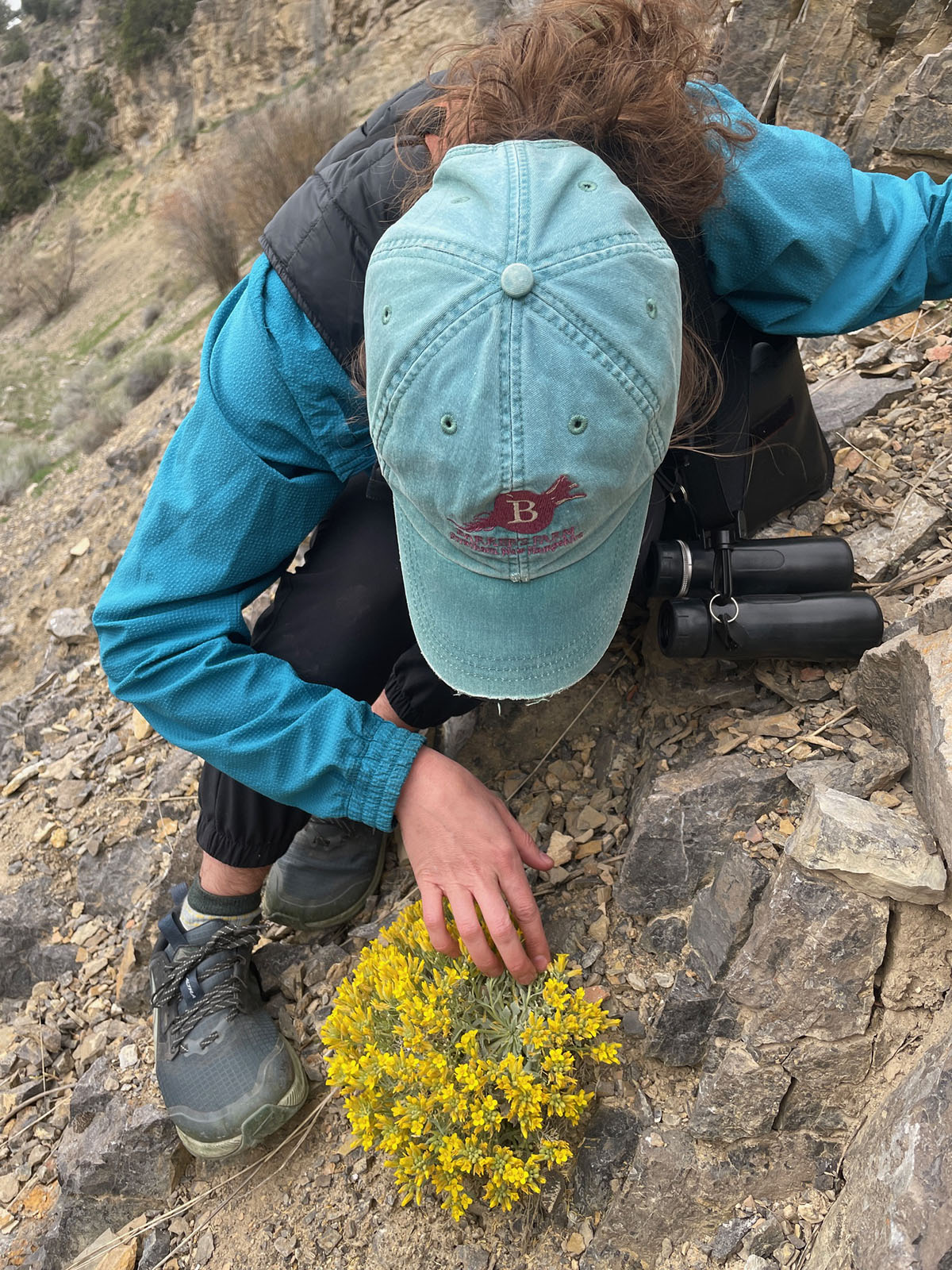
Botany action shot: Julia and the Physaria. 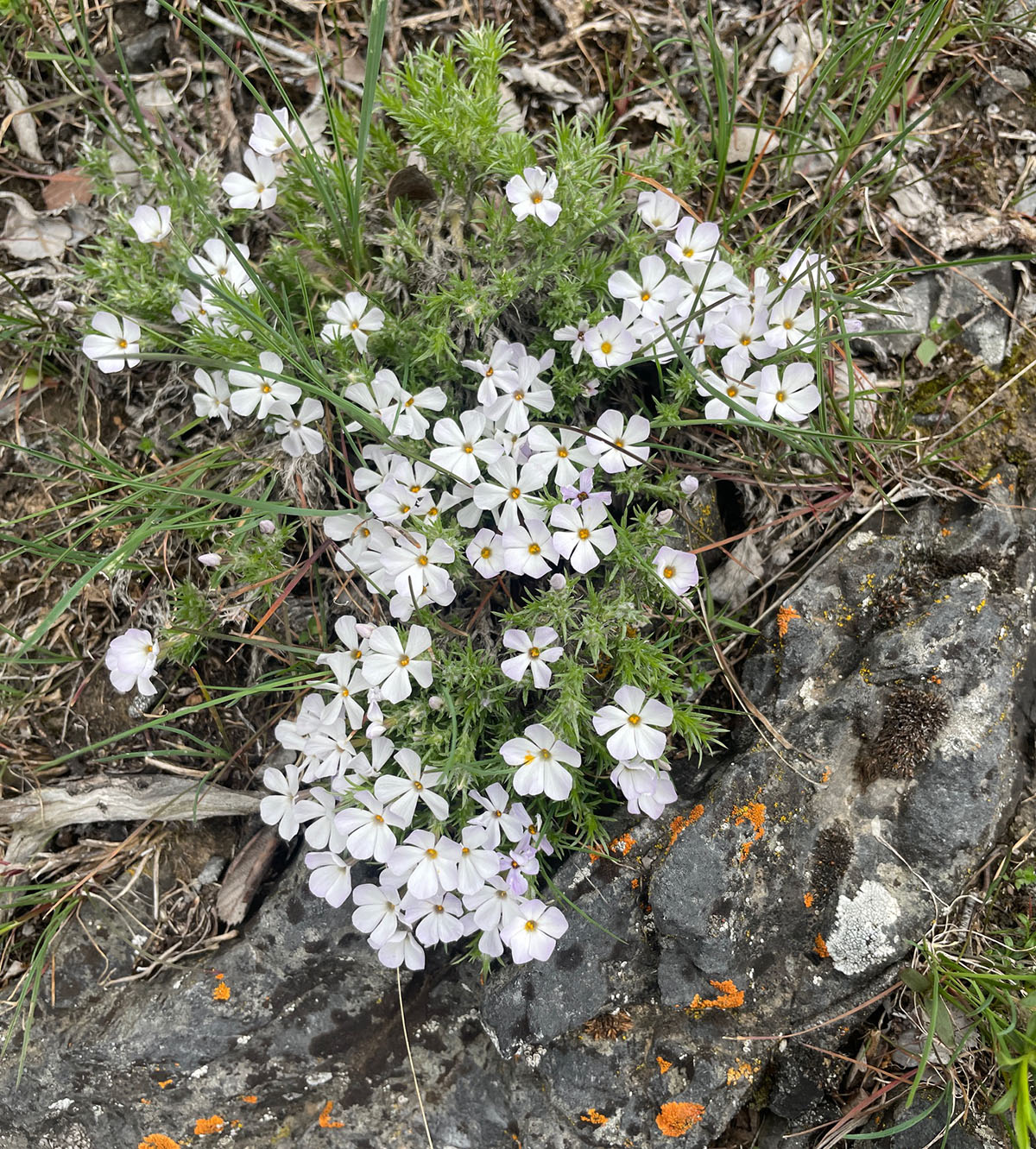
Phlox, looking Phloxy. 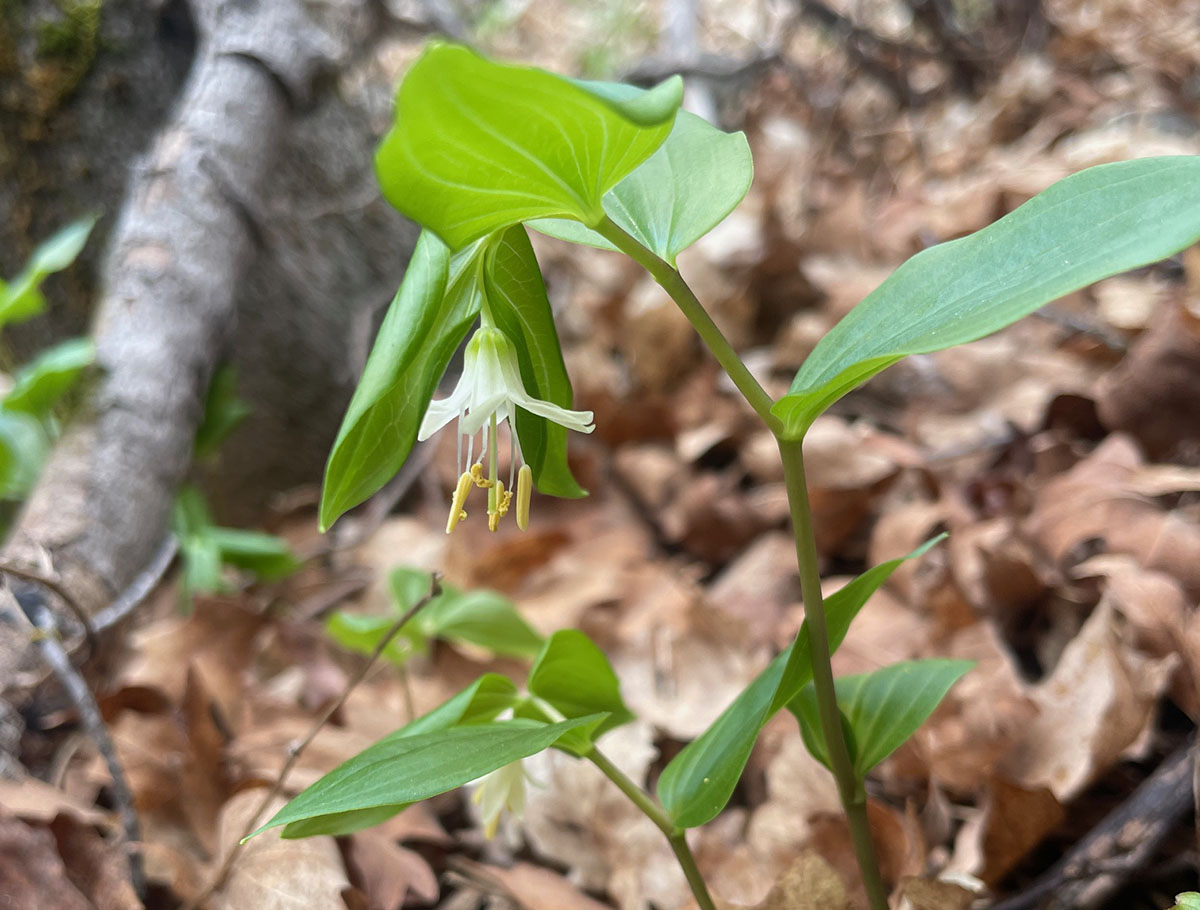
A little Prosartes to liven up the understory. 
A clear Boechera retrofracta x pendulina x exilis x stricta x microphylla. 
Ribes cereum. Some day I will learn to ID Ribes. 
Mertensia oblongifolia put on a good show. 
The legendary Primula maguirei, Logan Canyon icon. I mean, wow. For a non-fern it represents. 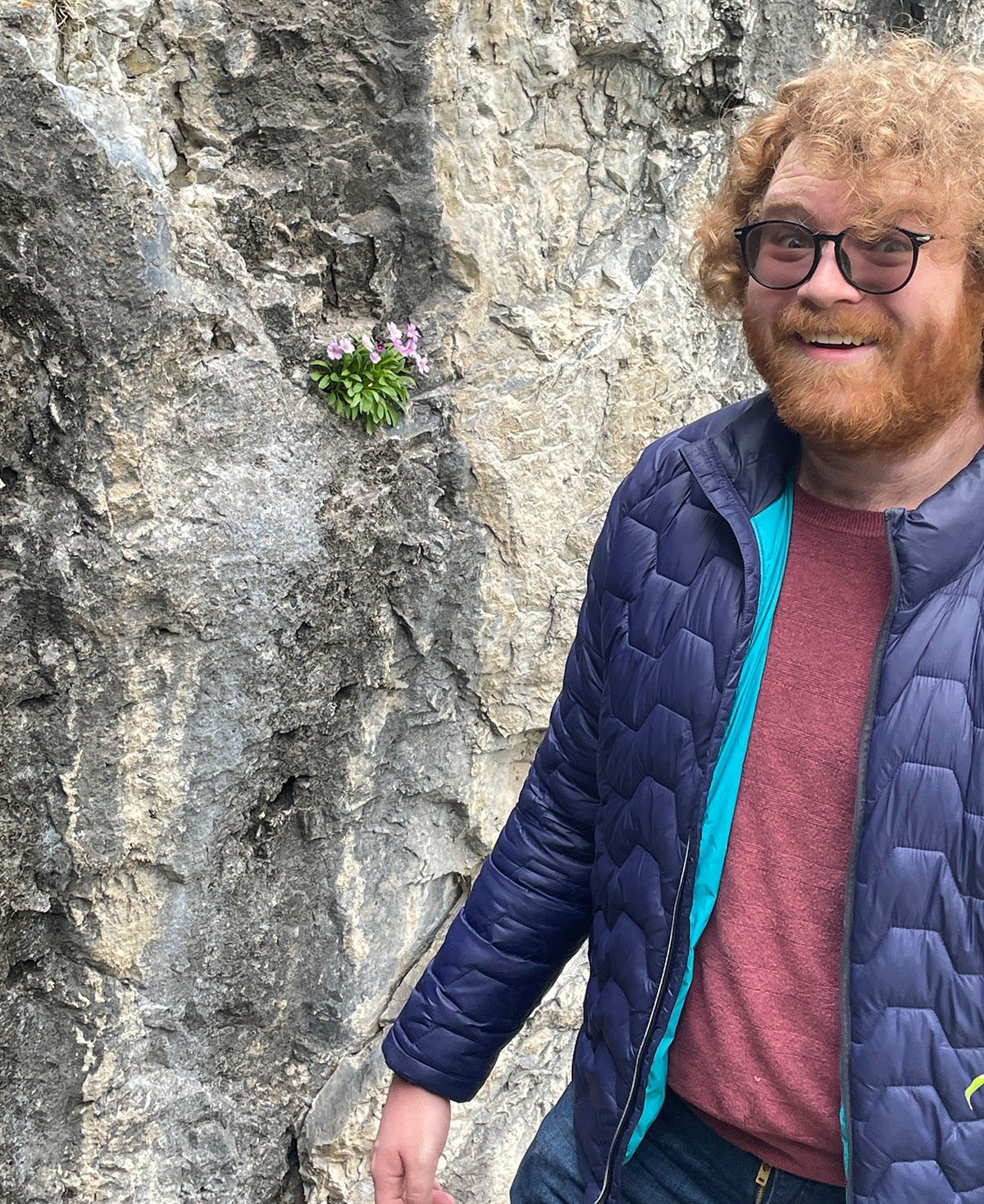
If you think David is excited here, imagine what he was like when we found the Myriopteris! Spoiler alert, I tragically didn’t get a picture of that. 
At long last, the star of the show, Myriopteris feei! Mission accomplished. 
A scaly abaxial close-up, for any of you skeptics out there. - A (belated) Happy New Year from the Rothfels Lab! (2/13/2024)
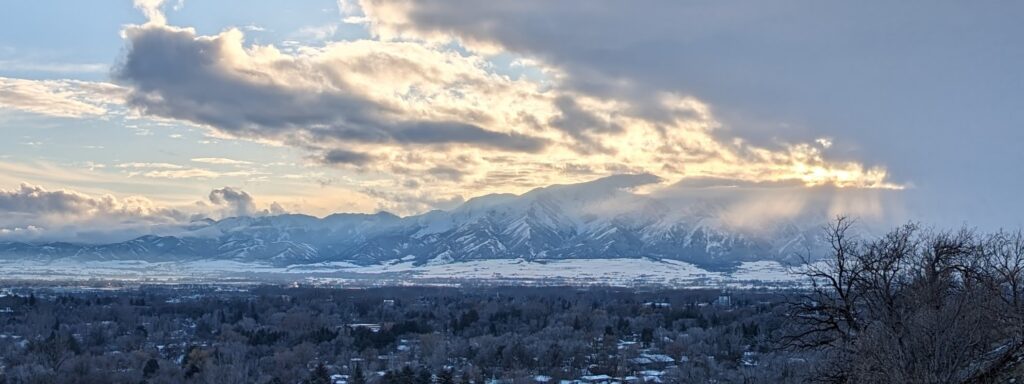
2023 was a big year! We collectively made more than 2800 iNaturalist observations, held the inaugural Intermountain Botanical Foray, and attended Botany2023 in Idaho.
As we move into 2024, we wanted to take a moment to congratulate lab members and lab alumni who are beginning new and exciting phases of their careers:
Lan Wei began her graduate studies with Erika Edwards at Yale University.
Forrest Freund started as a field biologist with the BLM in Redding, CA.
Jenna Ekwealor began in Jan 2024 as an Assistant Professor in the Department of Biology at San Francisco State University.
Carrie Tribble will be taking a faculty and curator position at the University of Washington Department of Biology and the Burke Museum in Fall of 2024.
Joyce Onyenedum is now Assistant Professor of Environmental Studies at New York University.
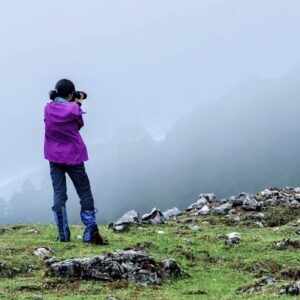
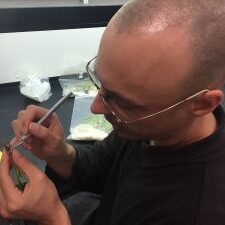
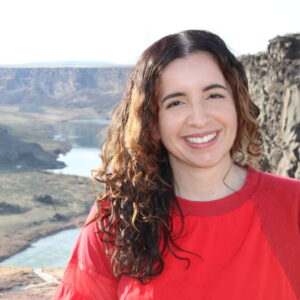
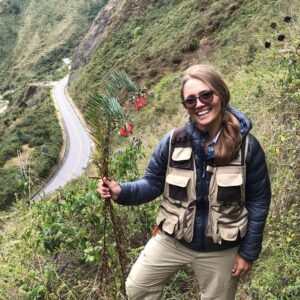

Congratulations Lan, Forrest, Jenna, Carrie, and Joyce!
We can’t wait to see what adventures everyone gets up to this year.